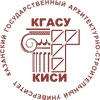About the authors
| First name, Middle name, Last name, Scientific degree, Scientific rank, Current position. Full and brief name of the organization, The organization address. | Kuleeva Lailya Muratovna candidate of architecture, professor E-mail: This e-mail address is being protected from spambots. You need JavaScript enabled to view it Kazan State University of Architecture and Engineering The organization address: 420043, Russia, Kazan, Zelenaya st., 1 Odintsova Yulya Leonidovna assistant E-mail: This e-mail address is being protected from spambots. You need JavaScript enabled to view it Kazan Federal University The organization address: 420008, Russia, Kazan, Kremlin st., 18 |
| Title of the article | A sustainable approach to the formation of the interior space |
| Abstract. | Problem statement. In order to understand the changes accumulated in the field of architectural, building design, as well as the practice of urbanization over the past hundred years, it is necessary to trace the transformation of the ideas of sustainable design. Results. The main result of this study is the classification of the ideas of sustainable approach in design in the 20th century. Within the framework of this work, the classification is proposed, which is a five-stage, divided by the «paradigm shift», which formed the architectural discourse and practice, which we observe today. Four out of five of these phases were mainly due to the basic reductionist paradigm that determined the stability of the architecture and buildings. The reductionist paradigm is mainly aimed at reducing the negative impact of the building on environmental efficiency. However, we are on the threshold of a paradigm shift that relies on sustainable interaction between man and nature. This paper describes the historical progress and various stages of modern sustainable architecture and explores the sustainability paradigms associated with these stages. Conclusions. The significance of the obtained results for the architecture consists in determining the key elements inherent in each stage of sustainable design. On the basis of these elements and the study of the experience of past generations, it is planned to put forward possible options for the transformation of the ideas of sustainable design at the present time. |
| Keywords. | sustainable design, functionalism, organic architecture, green design, environmental design, technological naturalness. |
| For citations: | Kuleeva L.M., Odintsova Y.L. A sustainable approach to the formation of the interior space // Izvestiya KGASU. 2018. №2(44) P.22-29. |















